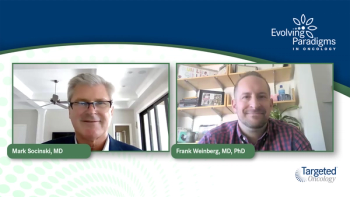
Prevention of GVHD
Dr Yi-Bin Chen describes several prophylactic regimens commonly used to prevent GVHD following allogeneic hematopoietic stem cell transplant.
Yi-Bin Chen, MD: Prevention for graft versus host disease is given after any allogeneic transplantation. There are 2 big categories of graft versus host disease prevention. One is graft manipulation, and this is much less common because it involves laboratory expertise and resources, but this involves taking the donor graft and manipulating it in certain ways. This is commonly referred to as T-cell depletion and can be done in positive selection and selecting for the hematopoietic progenitor cells or negative selection in eliminating a certain subset of cells that may cause graft versus host disease. The more common way of graft-vs-host disease prevention is with drugs or pharmacological agents. The international standard or framework over the last several decades has been the backbone of calcineurin inhibitors paired with methotrexate or mycophenolate. More recent years have seen the addition sirolimus either with or instead of methotrexate and many centers across the United States and certainly across Europe will add a polyclonal anti-T-cell globulin often referred to as ATG [anti-thymocyte globulin] to help in graft versus host disease prevention. There are other agents being studied and being added onto these backbones and those trials are ongoing. The newer regimen in terms of pharmacological prophylaxis of graft-vs-host disease that has emerged over the last decade is based around the administration of high doses of post-transplant cyclophosphamide, often given on day 3 and day 4 after transplantation. The mechanism here is thought to be elimination of alloreactive cells in that first week as well as preservation of regulatory T-cells, and this is generally paired with tacrolimus or sirolimus with mycophenolate. The PT-CY (post-transplant cyclophosphamide) regimens were first shown to be very efficacious in haploidentical, or mismatched, transplantation, and now they are being tested in conventionally matched transplantation prospective trials to see if they can replace the standard of care that we commonly use. We anticipate these results over the next few years, and it's a very exciting time as we continue to make progress.
This transcript has been edited for clarity.








































